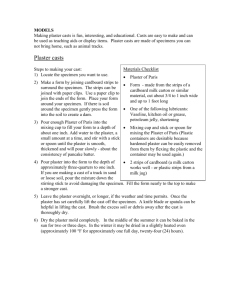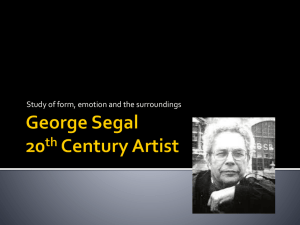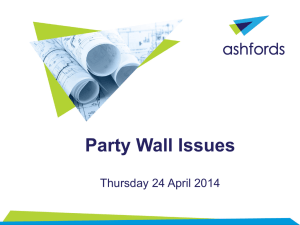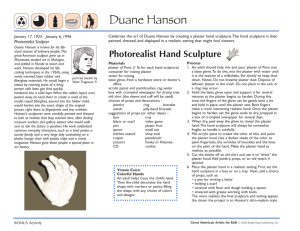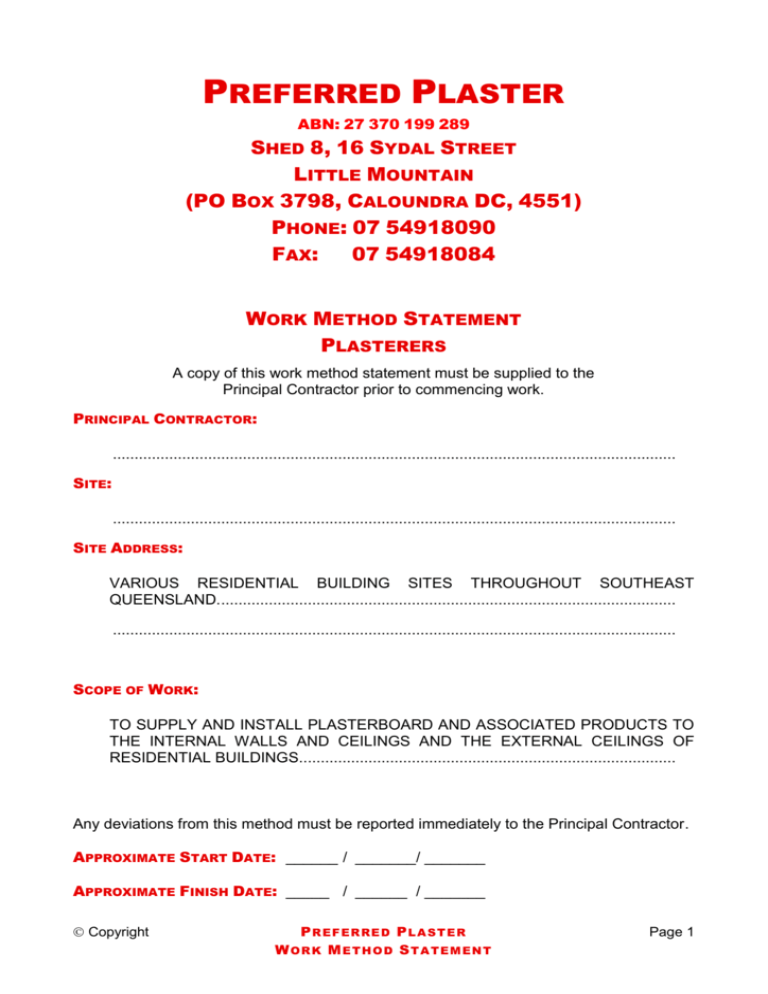
PREFERRED PLASTER
ABN: 27 370 199 289
SHED 8, 16 SYDAL STREET
LITTLE MOUNTAIN
(PO BOX 3798, CALOUNDRA DC, 4551)
PHONE: 07 54918090
FAX:
07 54918084
WORK METHOD STATEMENT
PLASTERERS
A copy of this work method statement must be supplied to the
Principal Contractor prior to commencing work.
PRINCIPAL CONTRACTOR:
..................................................................................................................................
SITE:
..................................................................................................................................
SITE ADDRESS:
VARIOUS RESIDENTIAL BUILDING SITES THROUGHOUT SOUTHEAST
QUEENSLAND..........................................................................................................
..................................................................................................................................
SCOPE OF WORK:
TO SUPPLY AND INSTALL PLASTERBOARD AND ASSOCIATED PRODUCTS TO
THE INTERNAL WALLS AND CEILINGS AND THE EXTERNAL CEILINGS OF
RESIDENTIAL BUILDINGS.......................................................................................
Any deviations from this method must be reported immediately to the Principal Contractor.
APPROXIMATE START DATE: ______ / _______/ _______
APPROXIMATE FINISH DATE: _____ / ______ / _______
Copyright
PREFERRED PLASTER
W OR K M E T H O D S T A T E M E N T
Page 1
PREFERRED PLASTER
SHED 8, 16 SYDAL ST.
LITTLE MOUNTAIN, QLD, 4551
ABN: 27 370 199 289
C ONTENTS
References ..................................................................................................................................... 2
Safety Policy ................................................................................................................................... 3
Roles and Responsibilities .............................................................................................................. 4
Safety Rules ................................................................................................................................... 4
Personal Protective Equipment Required ........................................................................................ 4
Method of Work .............................................................................................................................. 5
Accident Reporting Recording and Investigation ......................................................................... 5
Emergency Procedures ............................................................................................................... 6
First Aid ....................................................................................................................................... 6
Exposure to Sunlight ................................................................................................................... 6
General Safety Inductions ........................................................................................................... 7
General Housekeeping ................................................................................................................ 7
Alcohol and Drugs ....................................................................................................................... 7
Dust and Fumes .......................................................................................................................... 7
Hazardous and Toxic Substances ............................................................................................... 7
Common Plant............................................................................................................................. 7
Trestles / Planks .......................................................................................................................... 7
Lasers ......................................................................................................................................... 7
Storage of Materials .................................................................................................................... 8
Risk Assessments ....................................................................................................................... 8
Ladders ....................................................................................................................................... 8
Stilts ............................................................................................................................................ 9
Mobile Scaffold ............................................................................................................................ 9
Work Platforms ............................................................................................................................ 9
Working at Heights .................................................................................................................... 10
Domestic Construction
Commercial Construction
Electrical Equipment .................................................................................................................. 10
Compressed Air......................................................................................................................... 11
Manual Tasks ............................................................................................................................ 11
Plant and Equipment ................................................................................................................. 11
Contact Telephone Numbers ........................................................................................................ 12
Checklist ....................................................................................................................................... 13
Risk Assessment .......................................................................................................................... 14
Staff on Site .................................................................................................................................. 18
Appendix A Registers ................................................................................................................... 19
Appendix B Material Safety Data Sheets ...................................................................................... 20
R EFERENCES
WORKPLACE HEALTH AND SAFETY ACT
WORKPLACE HEALTH AND SAFETY REGULATION
ELECTRICAL SAFETY REGULATION
CODES OF PRACTICE
Copyright
PREFERRED PLASTER
W OR K M E T H O D S T A T E M E N T
Page 2
PREFERRED PLASTER
SHED 8, 16 SYDAL STREET
LITTLE MOUNTAIN, QLD, 4551
ABN: 27 370 199 289
S AFETY P OLICY
Workplace Health and Safety is based on the belief that the well being of people employed
at work or people affected by our work, is a major priority and will be considered during
work performed on our behalf.
People are our most important asset and their health and safety is our greatest
responsibility. The public is given equal priority to that of our employees.
The objectives of our Safety Policy are:
To achieve an accident free workplace.
To make health and safety an integral part of every managerial and supervisory
position.
To ensure health and safety is considered in all planning and work activities.
To involve our employees in the decision making processes through regular
communication, consultation and training.
To provide a continuous program of education and learning to ensure that
employees are aware of safe work practices.
To identify hazards in the workplace through hazard identification and risk
analysis.
To ensure incidents are prevented.
The success of our health and safety management is dependent on:
Proactive planning of work activities with due consideration given to
implementing Workplace Health and Safety controls that are suitable to each
given situation.
Understanding the total work process and associated Workplace Health and
Safety risks.
Ensuring the work team is totally committed to achieving our objectives.
Ensuring that open and honest communication exists between management
and employees.
SIGNATURE:
PRINT NAME:
Aaron Ruhle____________________
POSITION: Manager _________________________
DATED:
Copyright
PREFERRED PLASTER
W OR K M E T H O D S T A T E M E N T
Page 3
PREFERRED PLASTER
R OLES
AND
R ESPONSIBILITIES
SUPERVISOR (Supervisor)
_______________________________________________________________________
First Name
Family Name
is responsible to:
Monitor and review the compliance of this Work Method Statement;
Action safety reports and carry out workplace inspections;
Participate in safety meetings; safety programs and toolbox meetings;
Investigate hazard reports and ensure that corrective actions are undertaken;
Participate in incident investigations;
Supervise and ensure compliance with Work Method Statement;
Ensure Principal Contractors safety requirements are complied with;
Ensure workers have a Workplace Health and Safety General Induction card.
SIGNATURE: ____________________________
DATE: ________ / ______ / _______
Above Named person to sign
Experienced workers will be used to perform the work on this site.
Extra workers will be trained when required.
S AFETY R ULES
Personal Protective Equipment will be used.
Damaged electrical equipment to be removed from use.
This Work Method Statement will be adhered to.
Workers will assist the Principal Contractor with maintaining amenities ie: toilets
and lunchroom.
Workers will adhere to the Principal Contractor’s Site Rules.
P ERSONAL P ROTECTIVE E QUIPMENT R EQUIRED
Personal protective clothing / equipment will be worn in accordance with
Material Safety Data Sheets when using hazardous substances.
Safety footwear and hardhat will be worn in accordance with the Principal
Contractor’s site rules.
Shirt will be worn and a sunscreen will be applied to exposed areas of body.
Eye, hearing, hand and other personal protective equipment will be used when
and where required.
The use of a barrier cream is recommended to protect against industrial
dermatitis.
Copyright
PREFERRED PLASTER
W OR K M E T H O D S T A T E M E N T
Page 4
PREFERRED PLASTER
SHED 8, 16 SYDAL STREET
LITTLE MOUNTAIN, QLD, 4551
ABN: 27 370 199 289
M ETHOD OF W ORK
Systems
Follow the Work Method Statement.
Complete the checklist.
Accident Reporting, Recording and Investigation
Injuries of any nature (within reason) will be investigated, reported and recorded on an
incident / accident report form. This is for the benefit of the company and the individual if a
future dispute should occur.
Any Serious Bodily Injury, Work Caused Illness or Dangerous Event will be brought to the
Principal Contractor’s attention immediately.
Serious Bodily Injury means an injury to a person that causes
The injured person's death; or
The loss of a distinct part or an organ of the injured person’s body; or
The injured person to be absent from the person's voluntary or paid
employment for more than four (4) days.
Work Caused Illness means
An illness contracted by a person to which work, a workplace, a workplace
activity or specified high risk plant was a significant contributing factor; or
The recurrence, aggravation, acceleration, exacerbation or deterioration in a
person of an existing illness if work, a workplace, a workplace activity or
specified high risk plant was a significant contributing factor to the recurrence,
aggravation, acceleration, exacerbation or deterioration.
Dangerous event means An event caused by specified high risk plant, or an event at a workplace caused by a
workplace activity, if the event involves or could have involved exposure of persons to risk
to their health and safety because of
Collapse, overturning, failure or malfunction of, or damage to, an item of
specified high risk plant; or
Collapse or failure of an excavation or of any shoring supporting an excavation;
or
Damage to any load bearing member of, or the failure of any brake, steering
device or other control device of a crane, hoist, conveyor, lift or escalator; or
Implosion, explosion or fire; or
Escape, spillage or leakage of any hazardous material or dangerous goods; or
Fall or release from a height of any plant, substance or object; or
Uncontrolled explosion, fire or escape of gas or steam.
Copyright
PREFERRED PLASTER
W OR K M E T H O D S T A T E M E N T
Page 5
Emergency Procedures
Management is to be notified immediately of an emergency situation.
Knowing these procedures and following them can save unnecessary suffering and
perhaps the life of your fellow work mate.
Requiring an Ambulance
Injured person to be given first aid treatment at scene of event
and not moved unless his / her life is threatened – every effort to
be made to get help to the injured person.
Following an accident a member of the crew is to contact the site
supervisor immediately.
Supervisor to arrange Ambulance or medical help.
Telephone Contacts Nos. (See page 12 for supervisor’s phone number.)
The following information is to be provided accurately:
Location of the accident - ie: site.
Describe the nature of the injury and if possible how the accident occurred.
NOTE:
Two (2) persons to remain with the injured person.
Fire Procedure
Alert other workers and send someone to alert fire brigade.
Attend to persons in immediate danger.
If possible, switch off power near fire and disconnect power leads.
Use fire extinguisher if safe to do so.
Obey instructions of the Principal Contractors Supervisor.
Evacuation procedure
Remain at assembly point until directed otherwise by emergency personnel.
Hazardous Substance Exposure
For first aid procedures refer to Material Safety Data Sheets for detailed requirements.
Investigation immediately after the accident should obtain the following information.
The witnesses’ name, address and a contact phone number.
A signed statement from the witness.
A statement from the supervisor in charge.
This statement must contain the instructions the injured person was working under, the
Personal Protective Equipment the person was required to wear and what the person was
wearing.
First Aid
Our workers will have access to appropriate and adequate first aid.
Hygiene
Personal hygiene is encouraged especially when coming in contact with treated timber.
Workers are to wash their hands prior to eating, going to the toilet and before smoking.
Exposure to Sunlight
A shirt will to be worn. This shirt should have a collar and preferably have long sleeves.
Shirts with the sleeves removed may not be permitted.
Copyright
PREFERRED PLASTER
W OR K M E T H O D S T A T E M E N T
Page 6
General Safety Inductions
Evidence of a current General Safety Induction will be produced upon entering the site.
This evidence will be made available upon request.
A record is kept of workers inducted and the date of induction.
General Housekeeping
Waste materials / rubbish will be cleaned up at the end of the day and placed in the
provided skips or approved area. Workers noted littering on the site will be expected to
clean up.
Alcohol and Drugs
During work hours we require our workers to have a zero (0) blood alcohol level. Any
deviation from this is against the law and may result in disciplinary action.
Drugs, except “over the counter” or “prescribed” medications, will not be tolerated on site.
If medication, “prescribed” or “over the counter”, is required to be taken and carries a
warning of a side effect eg: drowsiness, then the supervisor or first aid officer must be
notified.
Dust
Every step is taken to protect workers from extract dust before relying on Personal
Protective Equipment, ie: extraction fans.
Respiratory protection will be used in accordance with the Material Safety Data Sheet for
the substance being used.
The correct respiratory protection with appropriate filters will be used for the process being
undertaken, for protecting the lungs where there is a risk from harmful dust.
Hazardous and Toxic Substances
Material Safety Data Sheets will be obtained and made available for employees to read.
Personal Protective Equipment and First Aid requirements will be as recommended in the
Material Safety Data Sheet (MSDS).
Common Plant
Common plant supplied by the Principal Contractor will be used in accordance with the
manufacturer’s instructions. No common plant will be misused, or interfered with.
The Principal Contractor will be consulted if changes are required to common plant.
Where the Principal Contractor has supplied common plant that requires users to be
trained in the use of, the Principal Contractor will supply the training.
Trestles / Planks
Workplace Health and Safety Regulations require platforms used on a trestle to have an
unobstructed surface width of 450mm. Work conducted above three (3) metres or more
for housing construction or 2.4 metres or more for other construction work must have edge
protection, each trestle should be secured. The working platform must not be higher than
5 metres.
Industrial rated trestles should be used to support a plank upon which a person has to
work.
Lasers
Experienced persons will operate Class 1 lasers. Lasers will be used in accordance with
manufacturers’ instructions.
Care will be taken not to directly point laser beam in the direction of anyone’s face, especially
the eyes.
Copyright
PREFERRED PLASTER
W OR K M E T H O D S T A T E M E N T
Page 7
Storage of Materials
Materials not in use will be secured and stored in a neat and tidy manner. No materials
will be left in a place where it interferes with the health and safety of others.
Materials will be kept clear of access ways.
Risk Assessments
Risk Assessments have been carried out as reported within this document. It may be
necessary to review these from time to time.
This will be done in accordance with the Workplace Health and Safety Code of Practice for
Risk Assessments.
Section 22 of the Workplace Health and Safety Act sets out how to apply Risk
Management
Identify the hazard
Assess the risk that may result because of the hazard.
Decide on the control measures to prevent, or minimise the level of risk, and
Implement the controls.
Monitor and review the effectiveness of the measures.
Ladders
Ladders are to be marked Industrial type with a load rating of at least 120kg and be
Australian Standard approved. Ladders are to be secured before use. The ladder must
extend at least one (1) metre past the landing platform. Utmost care is to be exercised
when transporting these ladders, as damage will make them unsuitable to be used on site.
When working on a ladder the user should remain centred between the stiles. The user
should not stand higher than the tread or rung indicated on the ladder as the highest
standing level.
The user should not stand on —
The top cap or the top tread of a self-supporting ladder;
Above the second top rung of a non-self-supporting ladder; or
The rear horizontal braces of a single-sided self-supporting ladder.
When working from a ladder higher than three (3) metres on domestic sites or 2.4 metres
on other sites, the worker will have at least three (3) points of contact on the ladder ie: both
legs and one arm. If a worker is unable to have three (3) points of contact on the ladder
then a pole strap must be used. The pole strap must be used in accordance with the
manufacturer’s instructions.
The ladder should be kept close to the work. The user should not overreach, but instead
should descend and relocate the ladder. A ladder should not be relocated while anyone is
on the ladder. When using a ladder the user should never push or pull unless the ladder
is properly secured.
Users should not 'walk' the ladder to reposition it but instead should descend and relocate
the ladder. 'Walking' describes the action of a person at the top of a ladder who, by
moving their body, causes the bottoms of the ladder stiles to lift clear of the floor so
causing the ladder to move.
Important Notes:
Single ladder to be no more than 6.1 metres in length;
Extension ladder maximum length 7.5 metres;
Industrial load rated 120 kg.
Copyright
PREFERRED PLASTER
W OR K M E T H O D S T A T E M E N T
Page 8
Stilts
Stilts are to be inspected thoroughly for defective components. These defective components
are to be replaced before use.
The wearing of stilts within the building construction industry can be hazardous unless the
manufacturers’ instructions are fully followed.
The manufacturers’ instructions state the following and will be adhered to:
Stilts
must not be worn without prior inspection
Don’t wear the stilts without being instructed on their use;
Don’t wear the stilts that are uncomfortable or out of adjustment;
Don’t modify or wear damaged stilts;
Don’t use on slippery surfaces;
Don’t use them on sand, rocky, uneven muddy or soft ground;
Don’t use them where they may become entangled in wire, builders lines, rope,
electric cable, extension cords etc;
Don’t carry heavy loads while using stilts;
Don’t attempt to walk fast or run on stilts;
Don’t attempt to pick anything lower than floor level;
Don’t wear stilts that are higher than necessary;
Don’t become over confident and fail to exercise caution;
Don’t lean over objects while on stilts;
Don’t take steps so large that the action springs the bottom out;
Don’t modify the stilts in anyway;
Don’t wear on balconies, stair wells or near lift wells;
Don’t wear silts up and down stairs.
Mobile Scaffold
Mobile Scaffold will be erected in accordance with the mobile scaffold plan / manufacturer’s
instructions.
Mobile scaffold plan will be attached to the scaffold.
At no time will the mobile scaffold be used without handrails of at least 900mm
high and mid-rails.
Toe boards will be in place.
Internal stair way will be in place and will be used.
At no time will workers climb up the outside of the mobile scaffold.
Wheels will be locked into place when being used.
At no time will a person ride the mobile scaffold.
Work Platforms
Competent workers or workers working under the direction of competent workers will be
allowed to use elevated work platforms such as scissor lifts and booms up to eleven (11)
metres.
Qualified workers only will be allowed to operate elevated work platforms over eleven (11)
metres.
Copyright
PREFERRED PLASTER
W OR K M E T H O D S T A T E M E N T
Page 9
Working at Heights
Domestic Construction
Where there is a risk of falling less than three (3) metres in housing construction, work
may be performed only where the hazard has been managed.
Where there is a risk of falling more than three (3) metres in housing construction work the
following must be installed:
Approved Edge protection; or
Fall arrest platform; or
Approved Fall arrest systems (some harness must not be used where a worker
can fall less than 6.5 metres); or
Fall protection may be of an approved safety railing system.
Care must be taken at heights less than three (3) metres. Safe working procedures must
be used.
Commercial Construction
Where there is a risk of falling less than 2.4 metres in commercial construction work must
be performed only where the hazard has been managed.
Where there is a risk of falling more than 2.4 metres in commercial construction work the
following must be installed:
Approved Edge protection; or
Fall arrest platform; or
Approved Fall arrest systems (some harness must not be used where a worker
can fall less than 6.5 metres); or
Fall protection may be of an approved safety railing system.
Care must be taken at heights less than 2.4 metres. Safe working procedures must be
used.
Electrical Equipment
The Principal Contractor is to ensure an appropriate safety switch on site.
Generators provided for the supply of electricity must have the appropriate safety devices
in place and in working condition, to prevent or minimise the risk of electric shock.
In accordance with the Electrical Safety Regulations our electrical equipment will be kept
in safe working condition, tested, tagged and maintained. Testing and tagging will be
carried out by a competent person every three (3) months.
Recommended Colour schedule for tags:
Red
January –March;
Green
April –June;
Blue
July –September;
Yellow
October –December;
A register of the equipment with a record of formal tests, inspections and repairs will be
kept.
Heavy duty leads are to extend no more than 35 metres.
Piggyback plugs and double adapters will not be used.
Green coloured cords will not be used.
Unsafe electrical equipment will be removed from use.
Portable Residual Current Devices (RCD) will be pushbutton tested daily.
Copyright
PREFERRED PLASTER
W OR K M E T H O D S T A T E M E N T
Page 10
Compressed Air
Compressed air can cause serious injuries to workers. Compressed air tools are not to be
misused. Compressed air tools are to be used for the task the tool is designed for.
Compressed air hose coupling must be of a permanent nature or have coupling clips to
prevent the hoses from parting.
Never direct the air jet at yourself or any other worker.
Never use defective equipment.
Manual Tasks
Back Injuries, sprains and strains are the major cause of lost time injuries.
There are some simple steps that you can follow to eliminate the risk of a manual handling
injury.
Step 1.
Always plan your lift. Select your pathway and check it for trip hazards.
Inspect the destination and determine where the load will be placed.
Step 2.
Examine the object. Determine its weight. Look for any sharp edges or
spikes. Will the load be balanced when lifted? Will the load block my
vision?
Step 3.
Position your feet around the load to get as close as possible. Keep your
back straight and bend your legs. Get a good grip, using your palms and
fingers.
Step 4.
Using your legs lift the object up. Lift smoothly and keep your back
straight. Do not twist while lifting.
Step 5.
Carry the load to its destination. Bending your legs and keeping your back
straight, place the load at its destination. Make sure the load is not placed
in a walkway and represents a trip hazard.
Step 6.
When carrying objects they must be carried close to your body.
Where the load is awkwardly shaped, too heavy or unbalanced, use a mechanical aid eg:
a trolley, a forklift, or alternatively ask for someone else to help you.
Plant and Equipment
Plant and equipment, including mobile scaffold and electrical equipment supplied, is for the
use of our employees and sub contractors only. Plant and equipment must be used in
accordance with the Manufacturer’s Instructions, relevant Australian Standards and this
Work Method Statement.
Plant or equipment needing maintenance will be removed from site until it is repaired.
Management or supervisor must be informed of any employee that is unsure of the safe
use of plant and / or equipment.
No guarding is to be removed from plant or equipment including grinders, saws
scaffolding, etc.
Copyright
PREFERRED PLASTER
W OR K M E T H O D S T A T E M E N T
Page 11
PREFERRED PLASTER
SHED 8, 16 SYDAL STREET
LITTLE MOUNTAIN, QLD, 4551
ABN: 27 370 199 289
PHONE: 07 54918090
FAX: 07 54918084
CONTACT TELEPHONE NUMBERS
ADMINISTRATION
AARON RUHLE 0407 585375
MANAGER
JON HARM 0418 885997
SUPERVISOR
COLIN CUPID 0411 308657
S/COAST FORMAN
DEAN BLAKE 0407 140922
S/COAST FORMAN REDMOND KIDMAN-LEWIS 0411 195774
ESTIMATOR
GAVEN ASHWORTH 0438 286134
AMBULANCE
000
FIRE
000
POLICE
000
POISONS INFORMATION CENTRE
Copyright
PREFERRED PLASTER
W OR K M E T H O D S T A T E M E N T
13 1126
Page 12
PREFERRED PLASTER
C HECKLIST
ITEM DESCRIPTION
Y E S /N O
REMEDY CARRIED
OUT
ACTION BY
1. Edge protection fully
encompasses work area.
2. Trestles / planks in good
condition.
3. Electrical equipment maintained
ie: tested / tagged, guarded.
4. Personal Protective Equipment
being worn.
5. Housekeeping maintained.
6. Manual handling procedures
being followed.
7. Material stored.
8. Access kept clear.
9. Material Safety Data Sheets
available.
10. Adequate Lighting.
11. Ladders used correctly / good
condition.
12. Ensure work areas are clear of
materials before using stilts.
13.
14.
15.
COMMENTS:
SIGNATURE: ____________________________
DATED: _______ / ______ / _______
Site Supervisor
Original copy is kept at Preferred Plaster’s office.
A copy is supplied to the Principal Contractor.
Copyright
PREFERRED PLASTER
Work Method Statement
Page 13
Falling People / Objects
Exposure to Sun
Penetrating objects
Public
Other
Workers
Hazards
Workers
Involved
PREFERRED PLASTER RISK ASSESSMENT
Class 1: Death, permanent Disability or Major Property Damage
Class 2: Temporary Disability or Minor Property Damage
Class 3: Minor Injury or Incident
Potential
Risk
Class
1
2
Action Required To Remove or Manage Risk
3
Provide and maintain edge protection on work
platforms / scaffold ie: Toe Boards; Mid Rail;
Hand Rails.
Restrict access to work areas under persons
working at heights (barricades / signs).
Use tools wrist straps.
Provide supervision and training.
Ensure the correct ladders and /or work
platforms are used correctly and maintained.
Ensure scaffold / work platform is safe to work
from by gaining assurance from the principal
contractor.
Use Personal Protective Equipment in
accordance with Work Method Statement.
Use Sunscreen (UV) protection.
Encourage wearing long sleeve shirts and wide
brimmed hats.
Provide awareness training.
Wear protective footwear.
Dispose of hazardous objects.
Ensure access ways remain clear.
Copyright
P R E F E R R E D P L A S T E R W OR K M E T H O D S T A T E M E NT
Page 14
Public
Other
Workers
Hazards
Workers
Involved
PREFERRED PLASTER RISK ASSESSMENT
Potential
Risk
Class
1
2
Hearing Loss
Electrical
Slips, Trips and Falls
Falling from Ladders / Work platforms
Dust
Class 1: Death, permanent Disability or Major Property Damage
Class 2: Temporary Disability or Minor Property Damage
Class 3: Minor Injury or Incident
Action Required To Remove or Manage Risk
3
Use hearing protection devices when required.
Provide awareness training.
Equipment tested, tagged and maintained.
Use earth leakage devices.
Check for electrical hazards, overhead cables
and switch boxes and leads prior to starting
work.
Keep work areas and passageways clear of
obstacles.
Unused gear to be stacked and stored.
Ensure ladder / work platform is stable and in
good condition.
Ensure the correct ladder / work platform is
used in accordance with manufacturer’s
instructions.
Use respiratory protection devices when
required.
Provide awareness training.
Copyright
P R E F E R R E D P L A S T E R W OR K M E T H O D S T A T E M E NT
Page 15
Public
Other
Workers
Hazards
Workers
Involved
PREFERRED PLASTER RISK ASSESSMENT
Potential
Risk
Class
1
2
Action Required To Remove or Manage Risk
3
Provide and utilise mechanical manual handling
devices where practical.
Provide instruction and training on safe lifting
techniques and manual handling hazards.
Materials delivered to site in bulk to be unloaded
by mechanical means of crane.
Use wheelbarrow or trolley to move boxes and
tools.
Recommended Personal Protective Equipment
Avoid lifting large, heavy awkward loads.
Unload materials and tools as close as possible
to point of use.
Ensure adequate resources to do task.
Manual Task Hazards
Hazardous Substances
Use in well ventilated areas.
Use moisturisers and barrier creams to protect
exposed skin affected by contact with
substances.
Use Personal Protective Equipment in
accordance with Material Safety Data Sheet.
Using Stilts
Training required.
Follow the manufacturers’ instructions and the
Instructions in this Work Method Statement.
Class 1: Death, permanent Disability or Major Property Damage
Class 2: Temporary Disability or Minor Property Damage
Class 3: Minor Injury or Incident
Copyright
P R E F E R R E D P L A S T E R W OR K M E T H O D S T A T E M E NT
Page 16
Public
Other
Workers
Hazards
Workers
Involved
PREFERRED PLASTER RISK ASSESSMENT
Potential
Risk
Class
1
2
Action Required To Remove or Manage Risk
3
Other Unidentified Hazards
Class 1: Death, permanent Disability or Major Property Damage
Class 2: Temporary Disability or Minor Property Damage
Class 3: Minor Injury or Incident
Copyright
P R E F E R R E D P L A S T E R W OR K M E T H O D S T A T E M E NT
Page 17
PREFERRED PLASTER
S TAFF ON S ITE
P O SI TI O N - W O R K E RS N AM E
Q U AL I F I C A TI O N S /
TRAINING
C U R R EN C Y
A full list of Preferred Plaster
employees is available from our
Supervisor Aaron Ruhle 0407 585375
SUB CONTRACTOR
Signature: _________________________________
Print Name: _______________________________
Position: __________________________________
Dated: _______ / ______ / _______
PRINCIPAL CONTRACTOR
Signature: _________________________________
Print Name: _______________________________
Position: __________________________________
Dated: _______ / ______ / _______
IMPORTANT DISCLAIMER:- No person should rely on the contents of this Work Method Statement without obtaining advice
from a qualified professional person. This Work Method Statement is written on the terms and understanding that (1) the
authors, consultants and editors are not held responsible for the results of any action taken on the basis of information in
this policy, nor any error in or omission from this policy; and (2) the publisher is not engaged in rendering legal, accounting,
professional or other advise or services. The publisher, and the authors, consultants and editors, expressly disclaim all and
any liability and responsibility to any person, whether Employer or Worker of this publication or not in respect of anything,
done or omitted to be done by any such person in reliance, whether wholly or partially, upon the whole or any part of the
contents of this publication. Without limiting the generally of the above, no author, consultant or editor shall have any
responsibility for any act or omission of any other author, consultant or editor.
All rights reserved. This complete document is protected by copyright act 1968 of Australia and its subsequent
amendments. No part of this publication may be stored in a retrieval system, or transmitted in any form or by other
means, electronic, mechanical, Photocopying, Recording or Otherwise, Without The Prior Permission Of The Owner
© Copyright Preferred Plaster
and B & I Safety Pty Ltd September 2005
Copyright
PREFERRED PLASTER
W OR K M E T H O D S T A T E M E N T
Page 18
PREFERRED PLASTER
SHED 8, 16 SYDAL STREET
LITTLE MOUNTAIN, QLD, 4551
ABN: 27 370 199 289
PHONE: 07 54918090
FAX: 07 54918084
APPENDIX A
REGISTERS
Copyright
PREFERRED PLASTER
W OR K M E T H O D S T A T E M E N T
Page 19
PREFERRED PLASTER
WORK METHOD STATEMENT REGISTER
The people who have signed this register have read the Work Method Statement
and hereby abide by the rules set out.
OFFICE USE ONLY
Persons Name
Copyright
Company/Employer
Copy Given
Yes
No
PREFERRED PLASTER
W OR K M E T H O D S T A T E M E N T
Signature
Date
Page 1
PREFERRED PLASTER
W ORK M ETHOD S TATEMENT T RAINING R EGISTER
Those who have read this Work Method Statement and signed this register
will abide by the rules set out.
OFFICE USE ONLY
P E R S O NS N A M E
Copyright
C OM P A NY / E M P L O Y E R
PREFERRED PLASTER
W OR K M E T H O D S T A T E M E N T
S I G NA T UR E
DATE
Page 2
PREFERRED PLASTER
P LANT T O B E U SED O N S ITE
1
2
3
4
5
6
7
8
9
10
11
12
13
14
OTHER COMMENTS:
Copyright
PREFERRED PLASTER
W OR K M E T H O D S T A T E M E N T
Page 1
PREFERRED PLASTER
GENERAL TRAINING REGISTER
SUBJECT:
WORKERS NAME
Copyright
SIGNATURE
PREFERRED PLASTER
W OR K M E T H O D S T A T E M E N T
DATE
Page 1
PREFERRED PLASTER
G ENERAL I NDUCTION R EGISTER
OFFICE USE ONLY
GENERAL
WORKERS NAME
SIGNATURE
DATE
INDUCTION
CARD SIGHTED
Y / N
Copyright
PREFERRED PLASTER
W OR K M E T H O D S T A T E M E N T
Page 2
PREFERRED PLASTER
HAZARDOUS SUBSTANCES REGISTER
The following is a list of the hazardous substances held on the site:
P R O D UC T S
CSR Acrylic Stud Adhesive
Copyright
APPROX.
A M OU N T
USER ON SITE
NAME OF EMPLOYER OR SELF
EMPLOYED PERSON
Preferred Plaster
PREFERRED PLASTER
W OR K M E T H O D S T A T E M E N T
MSDS
PROVIDED
Y ES / N O
Yes
Page 1
PREFERRED PLASTER
E LECTRICAL E QUIPMENT R EGISTER
O F FI CE U S E O NL Y
DESCRIPTION
Copyright
TYPE / MODEL
NEXT TEST
DATE
PREFERRED PLASTER
W OR K M E T H O D S T A T E M E N T
I NS P E C T O R
S I G NA T UR E
DATE
Page1
PREFERRED PLASTER
SHED 8, 16 SYDAL STREET
LITTLE MOUNTAIN, QLD, 4551
ABN: 27 370 199 289
PHONE: 07 54918090
FAX: 07 54918084
APPENDIX B
MATERIAL S AFETY DATA
SHEETS
Copyright
PREFERRED PLASTER
W OR K M E T H O D S T A T E M E N T
Page 20


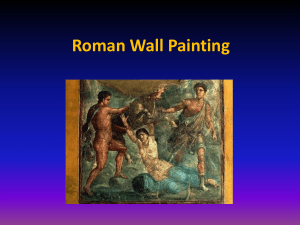
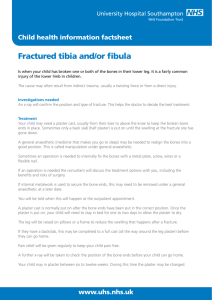
![First Aid Training : Bronze [Power Point]](http://s2.studylib.net/store/data/005424634_1-e0b0e5e602f7c1666ebc2e9ff3f4a1b5-300x300.png)
